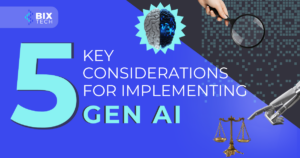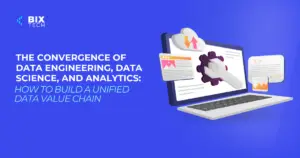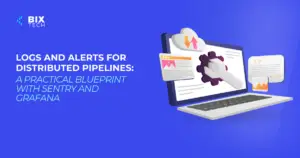Unlocking Scalability with Event-Driven Architecture: The Future of Data Pipelines

Sales Development Representative and excited about connecting people
In today’s digital landscape, data is not just abundant—it’s relentless. Businesses are generating, collecting, and analyzing data at record speeds. As organizations embrace digital transformation, their need for real-time insights and scalable infrastructure has never been greater. Enter Event-Driven Architecture (EDA): a modern approach that is transforming the way data pipelines are designed, built, and scaled.
In this article, we’ll explore what EDA is, why it’s a game-changer for building scalable data pipelines, and how your business can take advantage of this powerful architectural pattern.
What is Event-Driven Architecture?
Event-Driven Architecture (EDA) is a design paradigm where system components communicate by producing and consuming events. An “event” is simply a significant change in state or an occurrence within a system—like a user making a purchase, a sensor recording a temperature change, or a database update.
Unlike traditional request-driven or batch-processing systems, EDA encourages components to react to events as they happen, leading to more responsive, flexible, and decoupled systems.
Key Components of EDA
- Event Producers: Generate events when something noteworthy happens.
- Event Consumers: Listen to and process events as they are published.
- Event Brokers: Middleware (like Kafka, RabbitMQ, or AWS SNS/SQS) that route events from producers to consumers.
Why EDA is the Backbone of Scalable Data Pipelines
The demand for real-time analytics and dynamic applications has outpaced what traditional architectures can offer. EDA shines in this environment because it enables:
Seamless Scalability
Each component in an EDA system operates independently, allowing teams to scale only the necessary parts of the pipeline. For example, if you’re experiencing a spike in user activity, you can scale just the consumer responsible for processing those events—without affecting the rest of your system.
Flexibility and Decoupling
With EDA, producers and consumers are loosely coupled. This means you can update, replace, or add new event processors without disrupting the rest of your pipeline. This flexibility is crucial for businesses that need to innovate quickly and respond to new requirements.
Real-Time Responsiveness
In an EDA-based pipeline, events are processed as soon as they occur. This enables everything from instant fraud detection in fintech to dynamic recommendation engines in e-commerce. For industries where milliseconds matter, EDA is a clear winner.
Real-World Applications of EDA in Data Pipelines
Let’s put theory into practice. Here are some ways businesses are using event-driven architectures to supercharge their data pipelines:
Streaming Analytics
Retailers can track inventory changes, sales transactions, and customer interactions in real time. With EDA, each of these events can trigger downstream processes—such as updating dashboards, sending alerts, or personalizing marketing offers—without any significant lag.
IoT and Sensor Data
Manufacturers and utilities collect massive amounts of sensor data from equipment and infrastructure. By leveraging EDA, they can process sensor events instantly to detect anomalies, predict failures, or automate maintenance scheduling.
Modern Microservices
EDA is a natural fit for microservices, where individual services handle specific business logic. Events allow these services to communicate efficiently, reducing bottlenecks and enabling horizontal scaling.
For a deeper dive into how AI and data analysis intersect with modern architectures, check out AI and Data Analysis.
Implementing EDA: Best Practices for Scalable Data Pipelines
Transitioning to an event-driven model requires thoughtful planning. Here are practical steps to get started:
Design Events Carefully
Not all data changes need to be events. Focus on business-significant occurrences that truly warrant downstream action. Define clear event schemas and stick to them to ensure interoperability.
Choose the Right Event Broker
Select a message broker that matches your scalability, durability, and latency needs. Kafka is popular for high-throughput, persistent pipelines, while lightweight brokers like RabbitMQ are ideal for smaller, real-time systems.
Embrace Idempotency
Since events may be delivered more than once, design your consumers to process repeated events safely. This helps prevent duplicate entries or inconsistent state.
Monitor and Trace Events
Use observability tools to monitor event flows and identify bottlenecks. Tracing tools can help you debug issues and ensure that your pipeline is running smoothly.
For more on structuring and scaling complex data operations, don’t miss our guide on Data Engineering in Modern Business.
Key Challenges and How to Overcome Them
While EDA unlocks scalability, it comes with its own set of challenges:
Event Storming
Too many events or poorly defined event flows can overwhelm your system. Start with a clear understanding of your business processes and incrementally introduce events where they add the most value.
Consistency
Because EDA is inherently asynchronous, maintaining data consistency across distributed systems can be tricky. Consider eventual consistency models and implement compensating actions where strict consistency is required.
Skill Gaps
EDA demands a shift in mindset and tooling. Invest in team training and pilot projects to build confidence and expertise.
The Future of Data Pipelines is Event-Driven
As data volumes and velocity continue to rise, scalable and flexible architectures are no longer optional—they’re essential. Event-Driven Architecture provides a blueprint for building robust, future-proof data pipelines that keep pace with the demands of modern business.
By embracing EDA, your organization can unlock real-time insights, respond to opportunities as they arise, and outpace the competition. Whether you’re building streaming analytics, empowering IoT, or modernizing your microservices, the event-driven approach is your ticket to scalable success.
Ready to take your data strategy to the next level? Discover more about building future-ready pipelines and digital transformation in our overview on Unveiling the Digital Transformation Revolution.
Conclusion
Event-Driven Architecture is more than a technical trend—it’s a fundamental shift in how we think about data, scalability, and business agility. By integrating EDA into your data pipelines, you’ll be well-equipped to meet tomorrow’s challenges, today.
Have questions or want to share your EDA journey? Let us know in the comments below!









